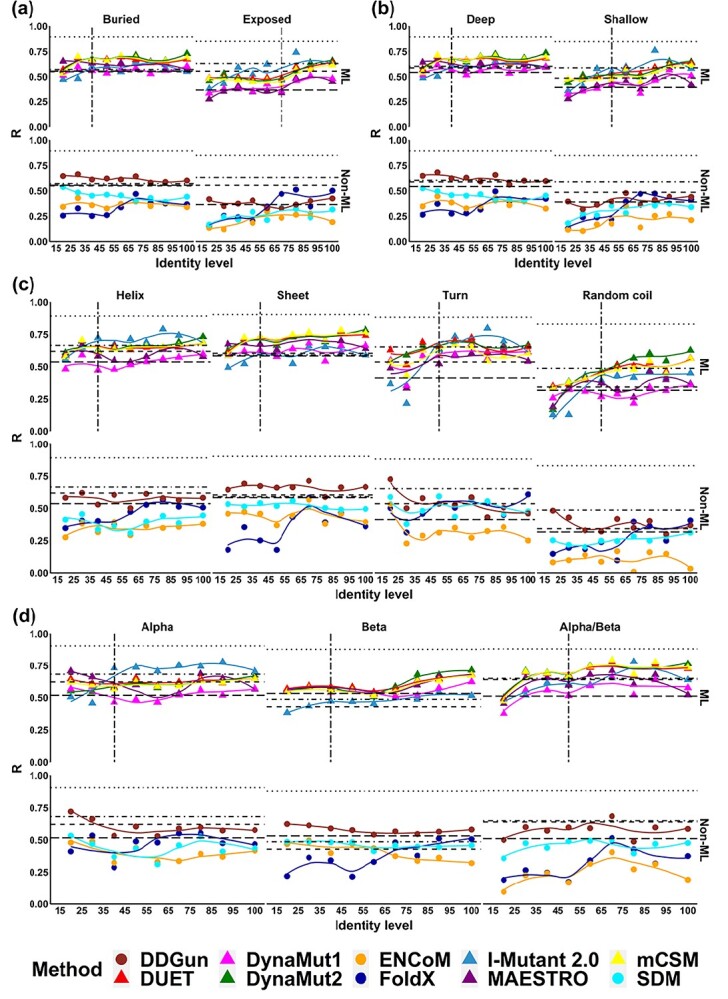Figure 4.

Performance trends based on Pearson’s correlation coefficient (R) of ten methods with mutations grouped based on four structure-based properties, namely (A) relative solvent accessibility (RSA), (B) residue depth, (C) secondary structure types and (D) structural class based on CATH. The performance trends of two main types of methods, namely machine learning based (ML) and Statistical/Energy function based (Non-ML), were displayed respectively. The RSA cutoff of 20% was used to determine buried or exposed residues. The residue depth cutoff of 2.2 Å was used to determine deep or shallow residues. Four secondary structure types, namely alpha helix, beta sheet, turn and random coil, were considered in this study. Three structural classifications, namely mainly alpha, mainly beta and mixed alpha/beta, were analysed.
